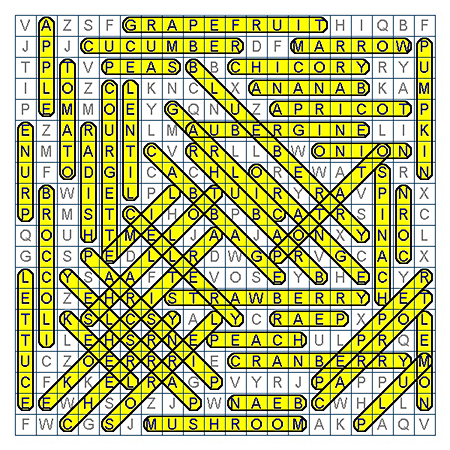C.2 Project ideas
A successful data science project involves asking a good question, creating or finding data that allow answering it, and possessing the skills and tools for actually doing so. In addition, communicating all this to others requires documenting the process in a transparent fashion.
In the following, we collect some ideas for potential data science projects. (See A: Data science projects of the i2ds textbook (Neth, 2025b) for the distinction between basic and advanced DS projects and corresponding project ideas.)
C.2.1 Conceptual projects
The following projects do not rely on data, but address conceptual problems that combine multiple types of representations:
Non-decimal arithmetic
- Create functions that transform integers from our standard decimal notation into symbol strings (i.e., sequences of numerals/digits) that use a positional digit system of a different base (e.g., base 2), and back (from some non-decimal base into base 10). Here are some examples that demonstrate and verify the success of this translation process:
| n_org | base | n_base | n_dec | same |
|---|---|---|---|---|
| 8242 | 2 | 10000000110010 | 8242 | TRUE |
| 719 | 9 | 878 | 719 | TRUE |
| 8921 | 8 | 21331 | 8921 | TRUE |
| 4921 | 7 | 20230 | 4921 | TRUE |
| 604 | 2 | 1001011100 | 604 | TRUE |
| 2263 | 5 | 33023 | 2263 | TRUE |
| 9985 | 9 | 14624 | 9985 | TRUE |
| 74 | 4 | 1022 | 74 | TRUE |
| 9253 | 10 | 9253 | 9253 | TRUE |
| 9053 | 5 | 242203 | 9053 | TRUE |
Add algorithms for arithmetic operations (e.g., for addition, subtraction, multiplication, etc.) that work for numbers written in arbitrary base notations (e.g., with
basevalues of \(2 \leq b \leq 16\)).How do particular base values affect the trade-offs (e.g., the frequency of symbols vs. recalling numeric facts from memory) in your calculations? (Comparing the base values of \(10\), \(11\), and \(12\), would yield interesing insights.)
Add translation functions and arithmetic operations for a non-positional number system. For instance, see the
as.roman()function of the utils package (and Schlimm & Neth, 2008).
Letter arithmetic
- Use your knowledge on replacing text symbols (see Chapter 9) to create letter arithmetic problems, like the following (from Simon & Newell, 1971):
Information given: D\(= 5\).
- We can easily turn arithmetic expressions into letter-arithmetic expressions by simply replacing our common numeral symbols (i.e., the Hindu-Arabic digits \(0-9\)) by alphabetic characters (e.g., using the
transl33t()function of ds4psy, see Section 9.5.1). As this neither changes the notational properties of the number system nor the rules of calculation, the difficulty of such problems shows how much we usually rely on our familiarity with particular numerals:
#> [1] "BIDI + IGAE = GFJFA"
#> [1] "BIDI - IGAE = -FFHG"
#> [1] "BIDI * IGAE = FEAFFDIH"
#> [1] "BIDI / IGAE = J.DEFECJGBGIHCCHE"| p_1 | p_2 | p_3 | p_4 | |
|---|---|---|---|---|
| 4858 | BIDI | BIDI | BIDI | BIDI |
| + | + | - | * | / |
| 8179 | IGAE | IGAE | IGAE | IGAE |
| = | = | = | = | = |
| 13037 | GFJFA | -FFHG | FEAFFDIH | J.DEFECJGBGIHCCHE |
If we wanted to move further from letter arithmetic to cryptoarithmetic, we can increase the obscurity by translating our numeric representation from a decimal notation to some non-decimal base value (see the project on non-decimal arithmetic above). Interestingly, by reducing the number of symbols involved (for base values \(b < 10\)) and increasing the number of constraints on the calculations shown, this could render the problems easier, rather than more difficult.
Create an algorithm that can solve cryptoarithmetic problems — and determines whether they have a unique solution.
Word search puzzles
- Combine your knowledge on character vectors (e.g.,
countriesorfruitsin ds4psy ) and plotting text (e.g., see theplot_chars()andplot_text()functions of ds4psy from Section 9.5.5) to create word search puzzles, like the following (from Payne, Duggan, & Neth, 2007):

Figure C.1: A word search puzzle (from Payne et al., 2007, doi 10.1037/0096-3445.136.3.370).
Figure C.1 hides the names of \(N = 45\) fruits or vegetables in a 20 x 20 grid of letters. Note that the target words can be written in various directions.
Allow for precise specifications of puzzle difficulty (e.g., by providing arguments for the frequency of words, their length, position and direction, as well as the word or letter frequency of targets and distractors).
How can we guarantee that the distractors do not contain words? Create an algorithm that searches such puzzles for a given dictionary of words.
See Appendix A: Data science projects of the i2ds course and textbook (Neth, 2025b) for additional DS project types, ideas and suggestions, and a current list of desiderata and requirements.